Kitchen Project #37: Apricot and olive oil cake
Low effort + high reward dream cake here we come.
Hello,
Welcome to another edition of Kitchen Projects. It’s so lovely to have you here.
Its bank holiday weekend in the UK, so this weeks newsletter is arriving with you a day early. For this week, I wanted to give you guys a recipe that you can throw together pretty quickly: Enter the dreamiest Olive Oil cake. It’ll last all weekend and will happily feed a rotating crowd. You can be chucked into a tin and taken to the beach and is just a bit of an all rounder.
Before we get started… A few months ago I launched KP+. Subscribing only costs £5 per month and with that, you’ll be supporting the writing and will get access to extra recipes, content + community chat threads! Just click below to get access to future content plus all of the archive (there’s a lotta good things in there):
Lots of love,
Nicola
Dreams are made of olive oil
This is my ‘get em whilst they’re still here’ apricot dream cake.
I’ve long been a fan of olive oil cakes. Oil cakes (see this KP+ Vanilla & Ricotta loaf recipe) have superior soft textures. Although flavourless oils are generally favoured in everyday baking as not to detract from the other ingredients, this cake puts olive oil at the absolute forefront. And it’s glorious.
For today’s bake, be sure to use something you’d be happy dipping bread in and basically drinking on its own. It can be something grassy, aromatic and intense so EVOO here we come.
Olive oil cake is one of those freakish cake batters - it looks so wet just after mixing that it seems improbable that this could ever become a solid cake. And yet somehow, it does! A crumb forms - a very moist one at that - but still, a crumb.
As well as this, this cake is EASY. Mix the wet stuff, mix the dry stuff, mix them together, bake and enjoy. There’s hardly any technique in this recipe but it’s the simple recipes that often have major teaching moments about balancing and flavour - there’s nowhere to hide!
A note on decoding recipes
Whenever I read a recipe, I always like to go down the list of ingredients and try to understand what role each one plays. If you’re trying to get more intuitive in the kitchen, I really recommend you try doing this every time you see a recipe - getting used to defining the specific role of each ingredient will really help you in the future when it comes to creating your own recipes or troubleshooting what went wrong. Here’s today’s ingredient list broken down in that exact manner:
Olive Oil - Adds moisture and flavour to the cake. Unlike butter, which is predominantly solid fat and ultimately becomes dry, the olive oil provides ongoing moisture to the crumb
Eggs - The proteins in the egg allow the cake to set - the yolk adds colour and the white provides moisture, too
Sugar - As well as adding sweetness, sugar tenderises the crumb by interrupting the bonds between flour (gluten network) and egg proteins (the ones that set firm). You’ll find a cake made with less sugar will have a strange, matt crust and may look dry. Sugar also attracts water which helps the cake hold moisture for longer
Yoghurt - First and foremost, it adds flavour with its unmistakable tang. As well as this, it adds softness and moisture. It is also acidic which helps activate the raising agents
Raising agents - Raising agents react either with themselves (baking powder) or with acidic ingredients (baking soda) to release carbon dioxide. These bubbles get trapped within the network of the cake, making it rise and giving the cake its fluffy crumb
The deal with flour / alternative bulkers!
The role of flour is often interesting and changeable. We most associate flour with gluten - the sticky, stretchy mesh of proteins created when flour meets water - but flour is often used in recipes where we don’t need elasticity, stretchiness or anything that we associate with gluten. So, what is the role of flour in cakes then?
I like to think of flour as a bulking ingredient when it comes to cake. Although we can’t help gluten from being formed - it will happen as soon as flour comes into contact with water - we don’t want to encourage it. We need there to be enough structure for the cake to actually take form and for there to be enough of a protein mesh to capture the air bubbles as they expand in the oven, giving a cake its final texture.
The first way we discourage gluten in cakes is using a flour with a low protein content - usually called cake flour. The second way is to work it as little as possible! Flour is always added last during cake making and should only be stirred or folded until just combined.
Depending on the type of cake, you can start to experiment with what you bulk your cake with. Flour can create light and springy bakes - you can take this a step further by using a portion of cornflour (gluten free) or rice flour (gluten free) in combination to even further avoid gluten development. For something like olive oil cake, or a cake that is purposefully dense, you can start to introduce more textural bulkers like ground nuts or more gritty fillers like polenta, or an alternative wheat grain like semolina.
Subbing solids
Semolina, despite having a very high gluten content, behaves differently from regular wheat flour in that it is made from durum wheat. Standard flour is considered ‘soft wheat’ whilst durum is ‘hard wheat’, referring to how much the grain resists milling. So, it is generally coarser and has a more golden colour as well as having its own flavour.
On its own, semolina didn’t make the best texture - it was a bit piecey and strange. This is where almond comes in - it adds amazing tenderness. Almonds are brilliantly absorbent and give this cake a soft yet rubble like texture that is such a joy to eat.
In my original olive oil cake recipe, the flour was a tiny 15% of the overall cake weight. Wanting to update my recipe to use semolina and almonds for texture and flavour, I found that 15% was a bit too low. The whole cake was just slightly too wet:
I slowly increased the solids until I was happy - ending at just 22% of the total weight. At this range, you still get a really juicy cake but it has a bit more body.
Adding juicy fruits to cake
Although I could have made my original olive oil cake and served roasted fruit on the side, I really wanted to find a way to marry the two together for todays KP.
For my first attempt I simply added apricot halves to the batter. Although it tasted pretty good, the liquid from the apricots leaked out during baking. Because the batter is already so wet / liquid, there isn’t a lot to soak up the fruity-watery-syrup so the result was a ‘too wet’ cake that felt raw around the fruit.
I’m not sure if you know this, but fruit is actually quite annoying in cakes. You can’t always just throw it in without a second thought. This is due to fruit having a high water content which likes to escape during baking. Sometimes this is nice - it melds as it bakes, but sometimes it really wreaks havoc and ends up with a slightly raw looking border and a strange, soggy texture.
The best way to get past this is via a controlled explosion of sorts aka pre-cooking your fruit.
I pre-roasted the apricots with a little sugar, orange and lemon juice for just 15 mins in a medium oven. There are a few benefits here: By pre-roasting the apricots, the flavour of the flesh intensifies and loses some water content, the exact same water that was playing havoc in the structure of the cake. You get these jammy little fruit gems and I’m OBSESSED.
As well as this, you get the most beautiful syrup, rich with apricot and citrus flavours.
Since this cake requires you to make a syrup anyway, you’re just switching around the order of things! I often forget to make the syrup and am always scrambling just as it comes out of the oven, so doing it this way really suits me. I hope it’ll suit you too.
If you really can’t be bothered to roast the fruit then I do understand, so my best advice for that is to cut your fruit small. The smaller pieces will be less destructive as they bake. But trust me, you should take the extra step and roast your fruit first - you’ll be happy you did.
Adding flavours + let me tell you about noyaux
As we are pre-roasting the fruit, there is a great opportunity here to add flavours to your syrup. If you don’t like citrus, you can use a different juice, or water. Something herbaceous, like rosemary, could be lovely! It’s totally up to you.
Trying to make the most of the apricots, I’ve been adding noyaux to my roasting tray for this recipe. What’s noyaux you ask? Well, let me tell you:
Noyaux aka ‘ the forbidden almond’ is the flavour gem hidden inside your apricots and all your stone fruits, in fact.
Used to make almond extract, noyaux can be a little hard to get out (but i’ll show you how) and then you are free to use this magical ingredient any way you like. Adding it to jams, syrups or using it to infuse cream, they really are worth extracting.
The first time I came across noyaux was working with Nicola Gensler at Little Bread Pedlar. During the summer, we’d use apricots all season - with cheesecakes, in cakes, on danishes. As we prepped them, we’d be sure to put all the kernels to one side. After that, we’d then toast the kernels before wrapping up each kernel one by one in a tea towel and then smashing (gently) with a saucepan. Finally, the kernels were soaked in rum and left in a dark place for months. Although I couldn’t understand at first, the almond extract we were rewarded with in the winter months made me see the light.
For anyone - like me - who perhaps isn’t the biggest fan of delayed gratification, you can hot infuse your noyaux into syrups, jams or ice creams to get an immediate benefit from the flavour.
You shouldn’t eat them directly though. Even though you’d need two whole kernels a day to feel any ill-effects, the apricot kernel contain amygaldin which converts to cyanide after eating. There’s little to no risk of this if you’re just using the kernels for infusing though as the ‘toxins’ are very diluted throughout the entire recipe.
The recipe: Apricot & Citrus Olive Oil Cake
Makes 1 x 8 inch cake
You can totally swap in other stone fruit.
Roasted Apricots
200-225g apricots (around 6)
70g sugar
45g orange juice
30g lemon juice
Optional: Apricot noyaux
The cake
135g caster sugar
2 x medium eggs (105g)
110g olive oil
75g thick greek yoghurt, like fage
75g semolina, fine
75g ground almonds
4g baking powder (just under 1tsp)
1g baking soda (around 1/4tsp)
2 x oranges, zest only
2 x lemons, zest only
Preparing the noyaux
Pre-heat oven to 160c fan
Cut your apricots in half and remove the stones
Place stones on a baking tray
Bake for 10 minutes. This helps the stones become more brittle for cracking open
To crack the stones, place inside a kitchen towel and use a hammer, or rolling pin, to decisively hit the stone. Its quite hard to balance hitting hard enough and not smashing to smithereens
Release each kernel and reserve for future use
Roasted apricots
Pre-heat oven to 160c fan
Place apricot halves in a shallow roasting tray
Add sugar, citrus juices and noyaux if using. Don’t forget to zest your citrus fruits before you juice them
Mix gently until combined
Roast for 15-20 minutes until the apricots are soft
Carefully pour the syrup off / use a sieve and set aside. You can also remove the noyaux and reuse!
For the cake
Pre-heat oven to 160c fan
Add zest to caster sugar and rub inbetween your fingers to release the oils
Next whisk in the oil, yoghurt and eggs
In another bowl, mix the dry ingredients well
Finally mix the two together. The batter will be very liquid
Pour into your lined 8inch tin
Place your roasted apricot halves around the cake. I like to cut some of them into smaller pieces too
Bake for 45 minutes. If you are lacking colour on top, turn up to 180c and bake 5 minutes more
When it comes out of the oven, prick the top of the cake with a toothpick and pour syrup over. Leave to cool in the tin
Enjoy! Serve with creme fraiche or a dollop of something creamy
Store in something airtight - this is great for 5 days at least!





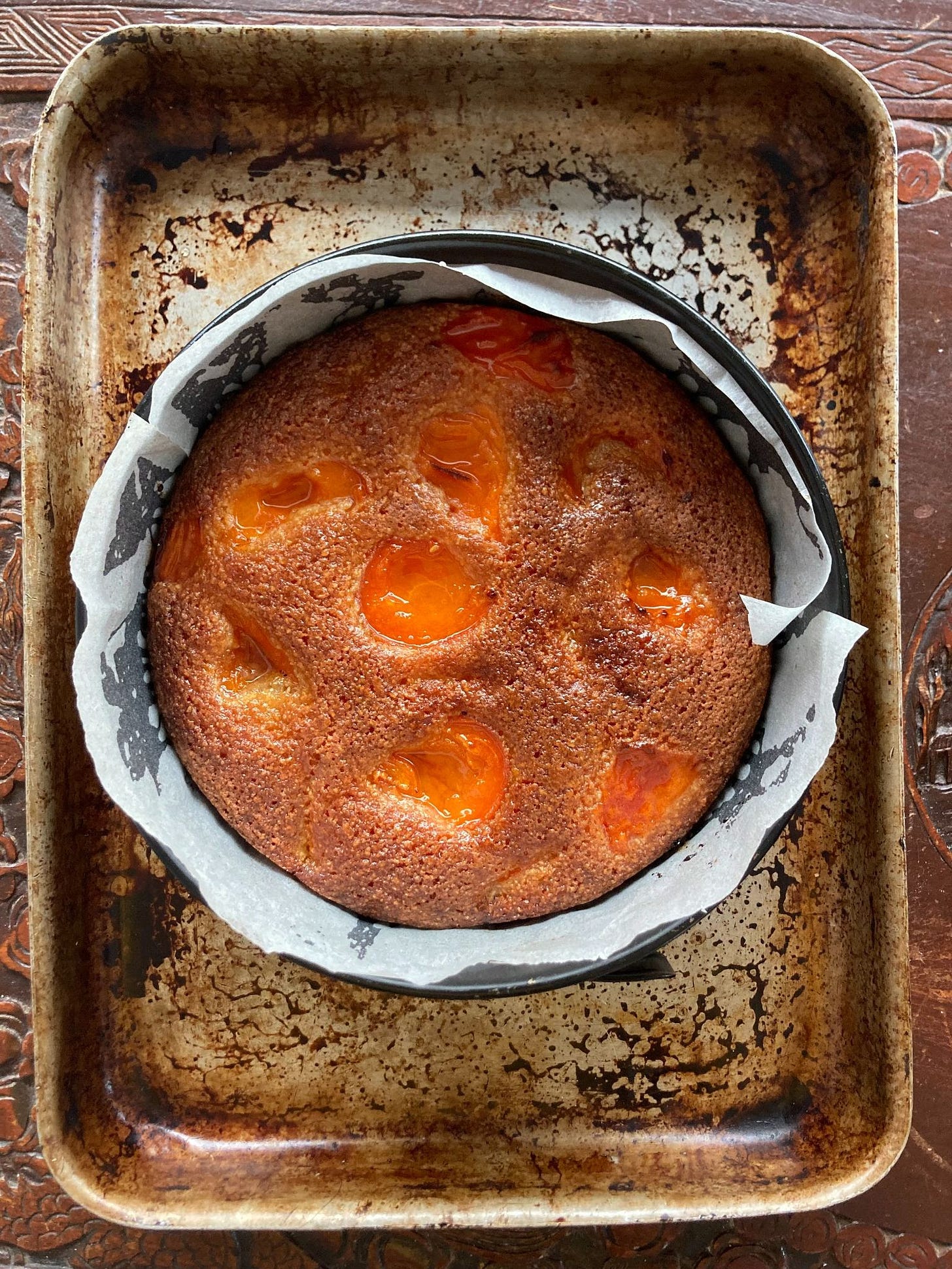
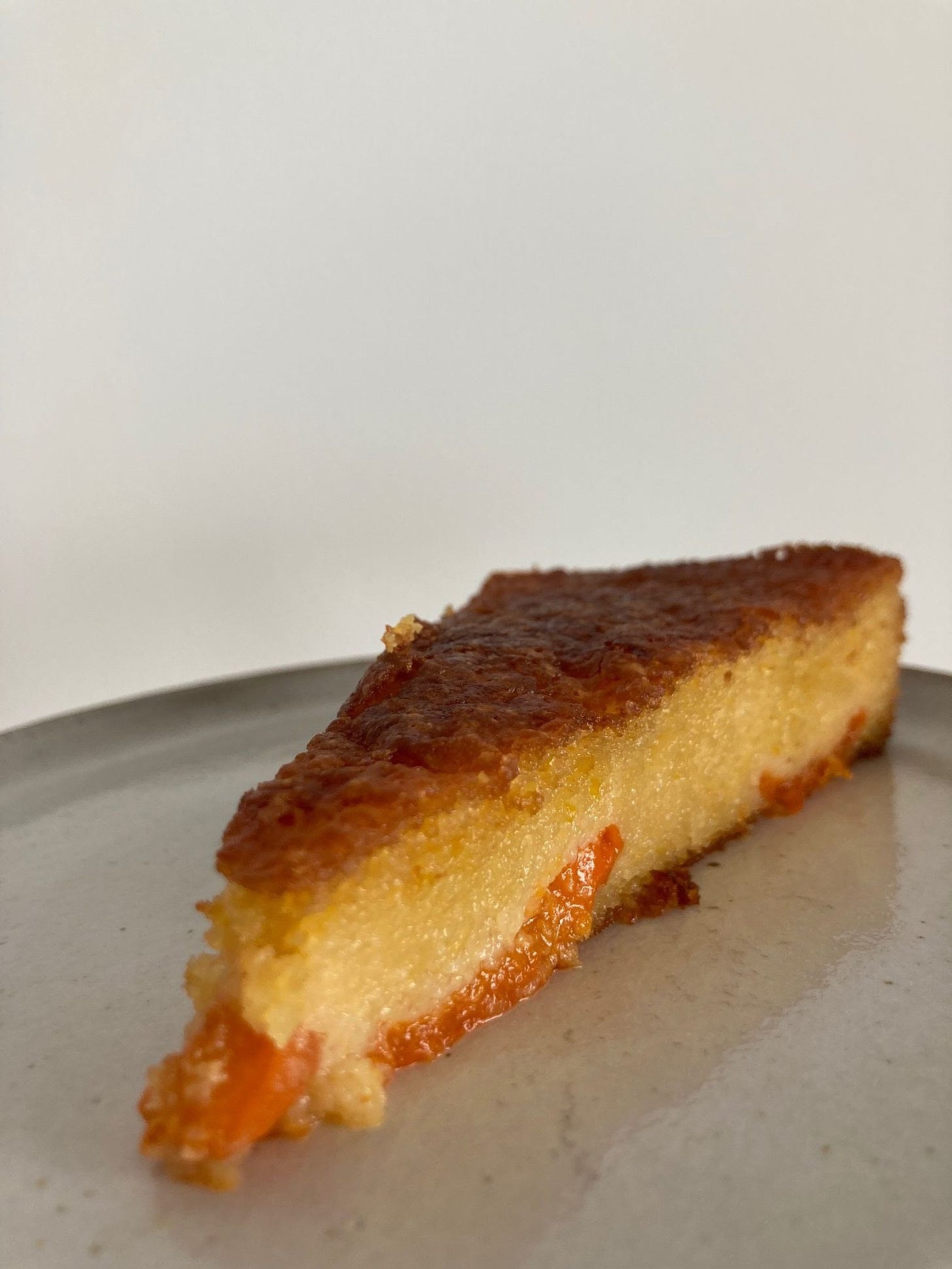
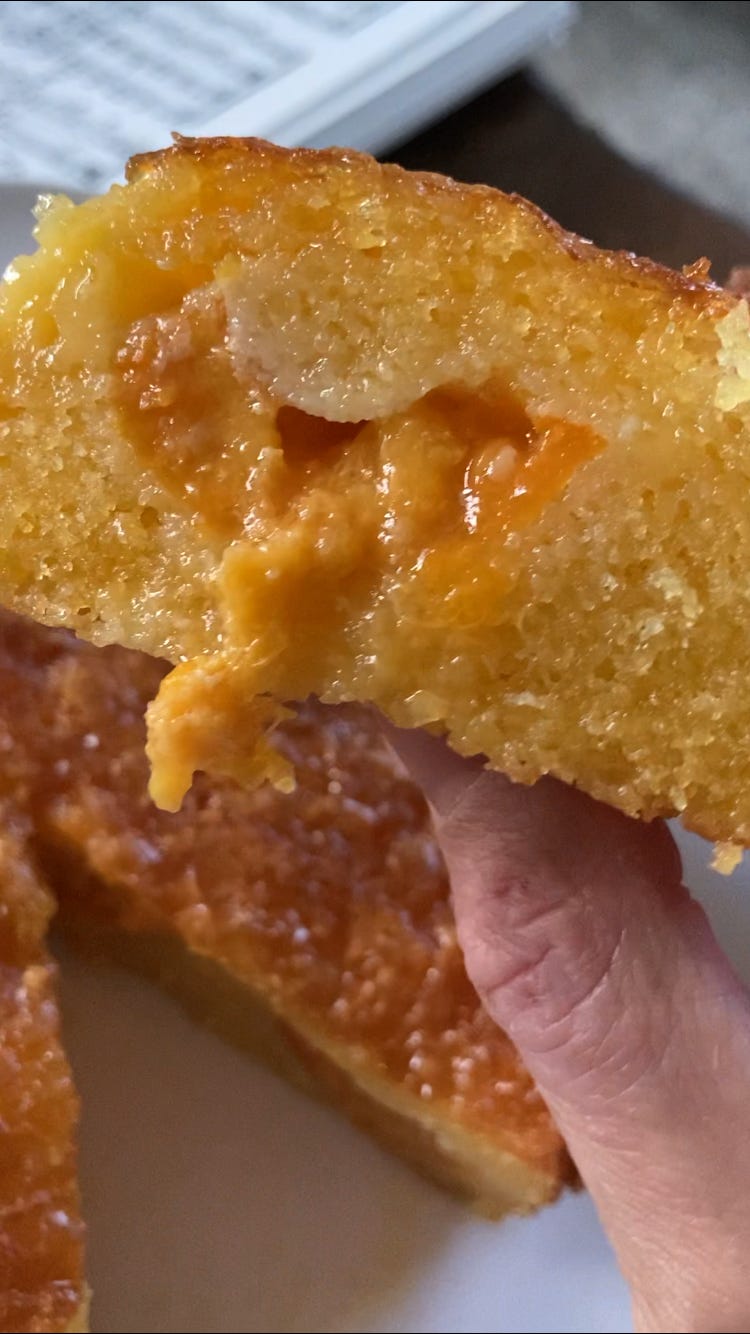
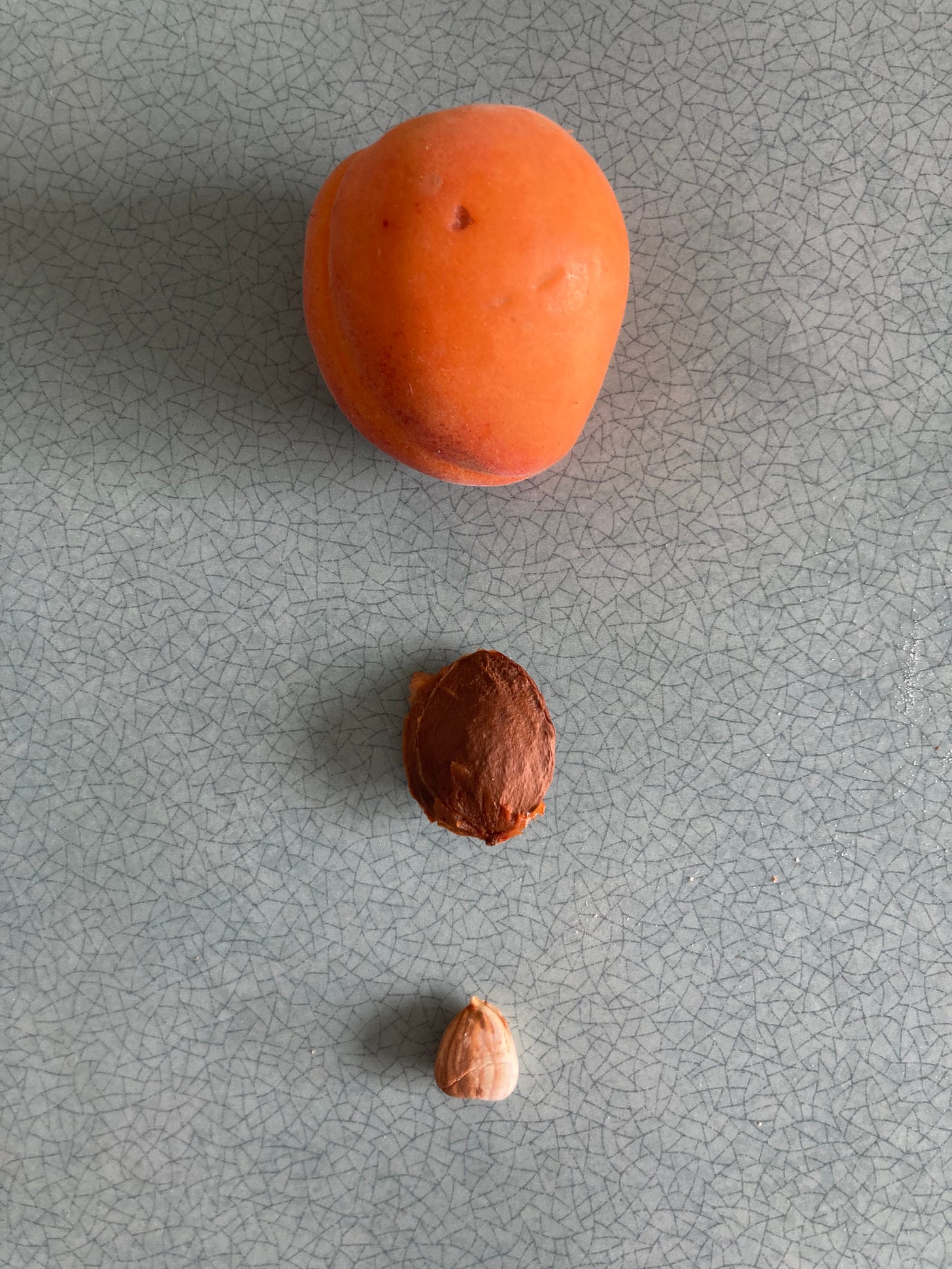
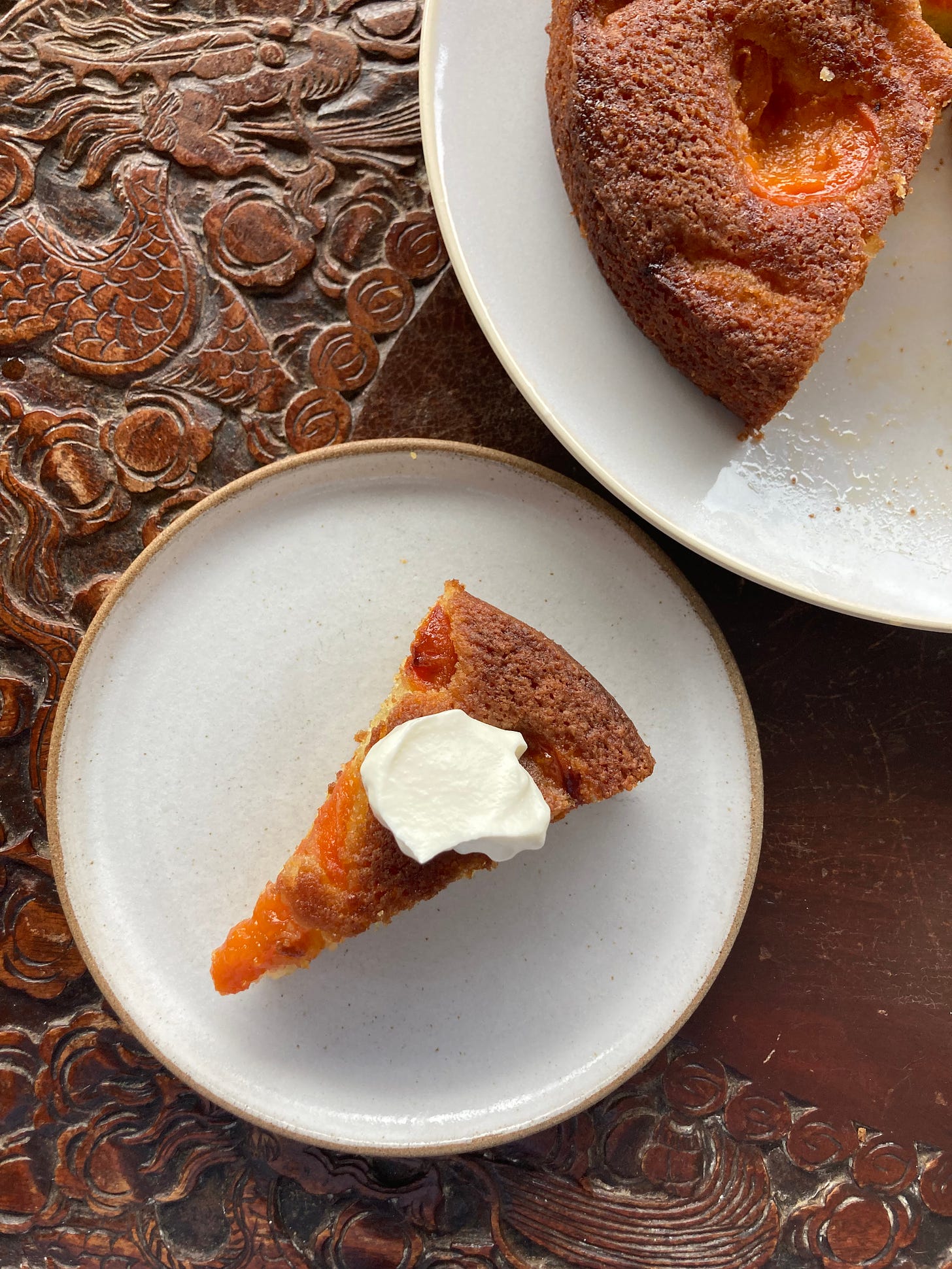

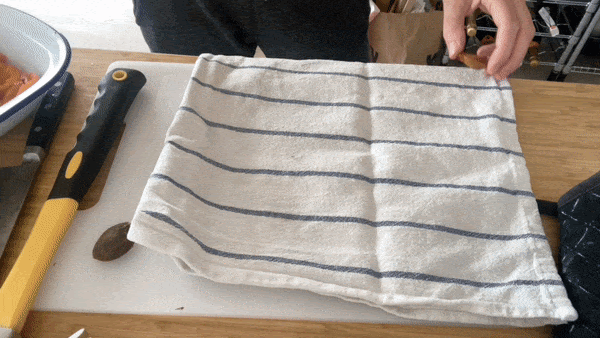



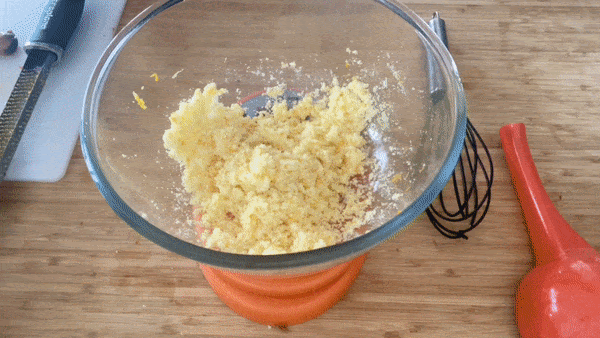
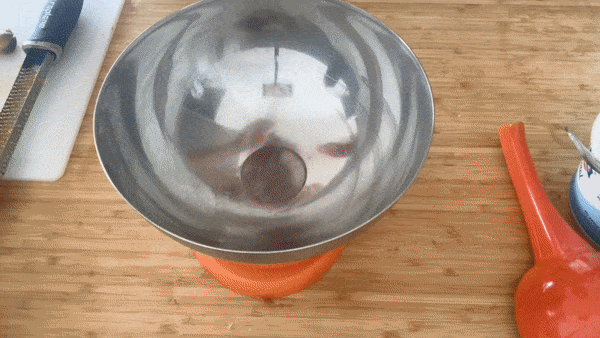


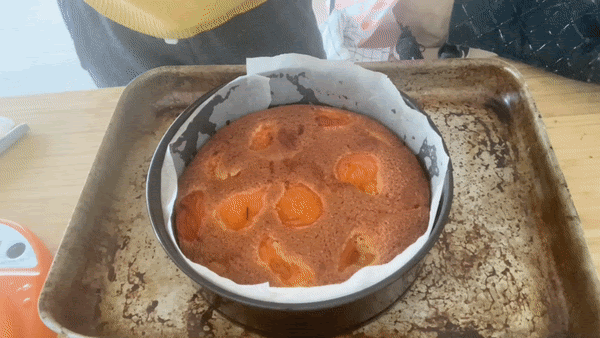
I have made this cake in so many forms. My favourite has to be as a birthday cake with lemon curd and mascarpone sandwiched between and Italian meringue topping
Made this for a last minute birthday cake and it got all the praise!!! Thanks so much Nicky xx